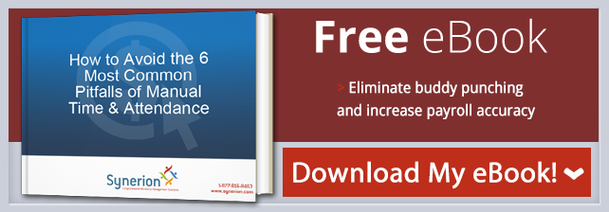
There are a number of common misconceptions about workforce management systems, propagated by both proponents and detractors alike. This stems from particular beliefs that aren’t necessarily accurate, and whether they paint automation software in a positive or negative light, they share a fundamental misunderstanding of it that doesn’t appropriately reflect the nature of such systems. As labour management solutions providers, we hear these often – below are 3 myths about workforce management systems that are all too common.
1. WFM Won’t Improve Our Current Time & Attendance Management
We’ve all had that manager or boss that is simply change-averse. Even if they’re not entirely suspect of change, they believe their current processes are so effective that they leave very little room for improvement. This is often the case when it comes to making decisions on labour management systems for their business.
The most common objection is that they’ve been using their system for years, and it’s worked just fine. This is particularly true of time and attendance management. The issue with this argument is that these managers aren’t always aware of the major pain points faced by HR or their Payroll departments. How much time are they spending on manual processes and data entry? How labour intensive is administrating employee hour tracking and compensation? The majority of managers will be shocked at just how much attention (and time) these tasks require.
2. WFM Can be Implemented Without Change Management
Effective labour management systems are, in relation to other systems and software, a fairly turnkey solution. However, many wrongly assume that the system can simply be implemented and will work beautifully, without any change management plan. This is unfortunately a false assumption.
Workforce management systems encompass and address many different organizational areas, often including employee scheduling software, time and attendance management components, labour costing and more. In order for your company to reap all of the benefits WFM has to offer, you must change the behavior of employees who have become used to the processes currently in place. On-boarding both management and employees is critical to success, plain and simple.
3. If It Works For Them, It Will Work For Us
When considering vendors for their workforce management system, businesses often make the mistake of assuming that a “one-size-fits-all” approach can be applied. They look at what the competition or other industry players are using, and are confident that if it worked for them, it will work for us. This is a dangerous assumption. In order to find the right WFM solution, you must take a serious look at the needs of your organization.
Small to mid-size businesses, for example, will have much different needs than enterprise businesses. Furthermore, the needs of the competition will likely be vastly different to those of your organization, as they will face different challenges and pain points. It is therefore important to identify what your major pain points are, and evaluate vendors based on how well they can address and resolve these pains.
While these are the most common myths about workforce management systems, with a little research and a discussion with the right vendor, they are easy to dispel. Once you gain a better understanding of the mechanics of WFM, you can make an informed decision that lets your organization reap all of the benefits it can bring.
